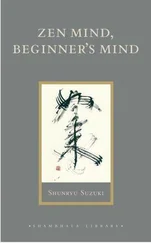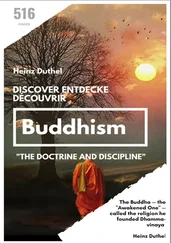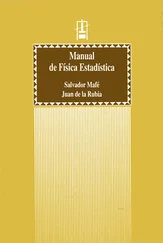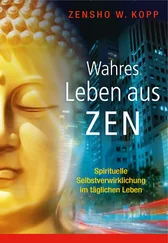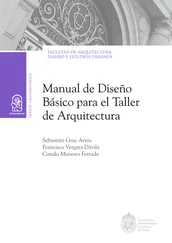Teitaro Suzuki - Manual of Zen Buddhism
Здесь есть возможность читать онлайн «Teitaro Suzuki - Manual of Zen Buddhism» весь текст электронной книги совершенно бесплатно (целиком полную версию без сокращений). В некоторых случаях можно слушать аудио, скачать через торрент в формате fb2 и присутствует краткое содержание. Жанр: Религиоведение, Религия, Руководства, на английском языке. Описание произведения, (предисловие) а так же отзывы посетителей доступны на портале библиотеки ЛибКат.
- Название:Manual of Zen Buddhism
- Автор:
- Жанр:
- Год:неизвестен
- ISBN:нет данных
- Рейтинг книги:3 / 5. Голосов: 1
-
Избранное:Добавить в избранное
- Отзывы:
-
Ваша оценка:
- 60
- 1
- 2
- 3
- 4
- 5
Manual of Zen Buddhism: краткое содержание, описание и аннотация
Предлагаем к чтению аннотацию, описание, краткое содержание или предисловие (зависит от того, что написал сам автор книги «Manual of Zen Buddhism»). Если вы не нашли необходимую информацию о книге — напишите в комментариях, мы постараемся отыскать её.
Manual of Zen Buddhism — читать онлайн бесплатно полную книгу (весь текст) целиком
Ниже представлен текст книги, разбитый по страницам. Система сохранения места последней прочитанной страницы, позволяет с удобством читать онлайн бесплатно книгу «Manual of Zen Buddhism», без необходимости каждый раз заново искать на чём Вы остановились. Поставьте закладку, и сможете в любой момент перейти на страницу, на которой закончили чтение.
Интервал:
Закладка:
What, Mahamati, is the Dhyana with Tathata for its object? When [the Yogin recognizes that] the discrimination of the two forms of egolessness is mere imagination, and that where he establishes himself in the reality of suchness ( yathabhuta ) there is no rising of discrimination, I call it the Dhyana with Tathata for its object.
What, Mahamati, is the Dhyana of the Tathagata? When [the Yogin], entering upon the stage of Tathagatahood and abiding in the triple bliss which characterizes self-realization attained by noble wisdom, devotes himself, for the sake of all beings to the [accomplishment of] incomprehensible works, I call it the Dhyana of the Tathagatas. Therefore, it is said:
There are the Dhyana for the examination of meaning, the Dhyana practised by the ignorant, the Dhyana with Tathata for its object, and the pure Dhyana of the Tathagata.
The Yogin, while in the exercise, sees the form of the sun or the moon, or something looking like a lotus, or the underworld, or various forms like sky, fire, etc.
All these appearances lead him to the way of the philosophers; they throw him down into the state of Sravakahood, into the realm of the Pratyekabuddhas.
When all these are tossed aside and there is a state of imagelessness, then a condition in conformity with Tathata presents itself; and the Buddhas will come together from all their countries and with their shining hands will stroke the head of this benefactor.
LXVIII
At the time, Mahamati the Bodhisattva-Mahasattva asked the Blessed One to explain concerning the deep-seated attachment to the existence of all things and the way of emancipation, saying: Pray tell me, Blessed One, pray tell me Tathagata, Arhat, Fully-Enlightened One, concerning the characteristics of our deep attachment to existence and of our detachment from it.
When I and other Bodhisattva-Mahasattvas understand well the distinction between attachment and detachment, we shall know what is the skilful means concerning them, and shall no more become attached to words according to which we grasp meaning.
When we understand well what is meant by attachment to the existence of all things and the detachment from them we shall destroy our discrimination of words and letters; and, by means of our wisdom ( buddhi ), enter into all the Buddha-lands and assemblies; be well stamped with the stamp of the powers, the self-control, the psychic faculties, and the Dharanis; and, well furnished with the wisdom ( buddhi ) in the ten inexhaustible vows, and shining with varieties of rays pertaining to the Transformation Body, behave ourselves with effortlessness like the moon, the sun, the jewel, and the elements; and hold such views at every stage as are free from all the signs of self-discrimination; and, seeing that all things are like a dream, like Maya, etc., [shall be able to] enter the stage and abode of Buddhahood, and deliver discourses on the Dharma in the world of all beings and in accordance with their needs, and free them from the dualistic notion of being and non-being in the contemplation of all things which are like a dream and Maya, and free them also from the false discrimination of birth and destruction; and, finally, [shall be able to] establish ourselves where there is a revulsion at the deepest recesses [of our consciousness], which is more than words [Can express].
Said the Blessed One: Well said, well said, Mahamati! Listen well to me then, Mahamati, and reflect well within yourself; I will tell you.
Mahamati the Bodhisattva-Mahasattva: said: Certainly, I will, Blessed One; and gave ear to the Blessed One.
The Blessed One said to him thus: Mahamati, immeasurable is our deep-seated attachment to the existence of all things the significance of which we try to understand with words. For instance, there are the deep-seated attachments to signs of individuality, to causation, to the notion of being and non-being, to the discrimination of birth and no-birth, to the discrimination of cessation and no-cessation, to the discrimination of vehicle and no-vehicle, of Samskrita and Asamskrita, of the characteristics of the stages and no-stages. There is the attachment to discrimination itself, and to that arising from enlightenment the attachment to the discrimination of being and non-being on which the philosophers are so dependent, and the attachment to the triple vehicle and the one vehicle, which they discriminate.
These and others, Mahamati, are the deep-seated attachments to their discriminations cherished by the ignorant and simple-minded. Tenaciously attaching themselves to these, the ignorant and simple-minded go on ever discriminating like the silkworms, which, with their own thread of discrimination and attachment, enwrap not only themselves but others and are charmed with the thread; and thus they are ever tenaciously attached to the notions of existence and non-existence. [But really] Mahamati, there are no signs here of deep-seated attachment or detachment. All things are to be seen as abiding in Solitude where there is no evolving of discrimination. Mahamati, the Bodhisattva-Mahasattva should have his abode where he can see all things from the viewpoint of Solitude.
Further, Mahamati, when the existence and nonexistence of the external world are understood to be due to the seeing of the Mind itself in these signs, [the Bodhisattva] can enter upon the state of imagelessness where Mind-only is, and [there] see into the Solitude which underlies the discrimination of all things as being and non-being, and the deep-seated attachments resulting therefrom. This being so, there are in all things no signs of a deep-rooted attachment or of detachment. Here Mahamati, is nobody in bondage, nobody in emancipation, except those who by reason of their perverted wisdom recognize bondage and emancipation. Why? Because in all things neither being nor non-being is to be taken hold of.
Further, Mahamati, there are three attachments deep-seated in the minds of the ignorant and simple-minded. They are greed, anger, and folly; and thus there is desire which is procreative and is accompanied by joy and greed; closely attached to this there takes place a succession of births in the [five] paths. Thus there are the five paths of existence for all beings who are found closely attached [to greed, anger, and folly]. When one is cut off from this attachment, no signs will be seen indicative of attachment or of non-attachment.
V. THE RYOGONKYO, OR SURANGAMA SUTRA [1]
There are in the Chinese Tripitaka two sutras bearing the title, “Surangama”, but they are entirely different in contents. The first one was translated into Chinese by
Kumarajiva between 402–412 and consists of two fascicles. The second one in ten fascicles was translated by Paramiti in 705, and this is the one used by the Zen and also by the Shingon. The reason why it is used by the Shingon is because it contains the description of a mandala and a mantram called “Sitatarapatala” (white umbrella), the recitation of which, while practising the Samadhi, is supposed to help the Yogin, as the Buddhas and gods will guard him from the intrusion of the evil spirits. But the general trend of thought as followed in this sutra is Zen rather than Shingon. It was quite natural that all the commentaries of it belong to the Zen school. The terms used here are somewhat unusual—especially those describing the Mind. The sutra is perhaps one of the later Mahayana works developed in India. It treats of highly abstruse subjects. Below is a synopsis of it.
1. The sutra opens with Ananda's adventure with an enchantress called Matanga who, by her magic charm, entices him to her abode. The Buddha, seeing this with his supernatural sight, sends Manjusri to save him and bring him back to the Buddha. Ananda is thoroughly penitent and wishes to be further instructed in the art of controlling the mind. The Buddha tells him that all spiritual discipline must grow out of a sincere heart and that much learning has no practical value in life, especially when one's religious experience is concerned. Ananda had enough learning, but no Samadhi to stand against the influence of a sorceress.
Читать дальшеИнтервал:
Закладка:
Похожие книги на «Manual of Zen Buddhism»
Представляем Вашему вниманию похожие книги на «Manual of Zen Buddhism» списком для выбора. Мы отобрали схожую по названию и смыслу литературу в надежде предоставить читателям больше вариантов отыскать новые, интересные, ещё непрочитанные произведения.
Обсуждение, отзывы о книге «Manual of Zen Buddhism» и просто собственные мнения читателей. Оставьте ваши комментарии, напишите, что Вы думаете о произведении, его смысле или главных героях. Укажите что конкретно понравилось, а что нет, и почему Вы так считаете.

